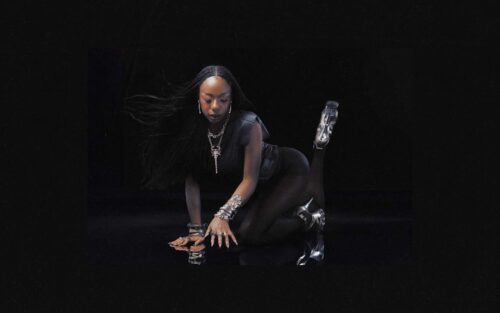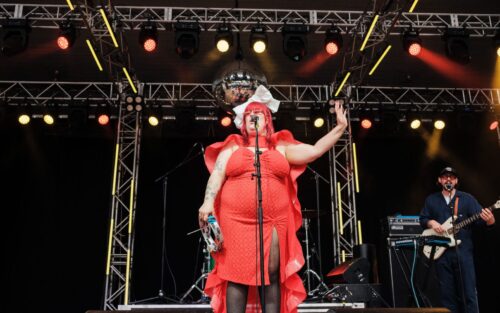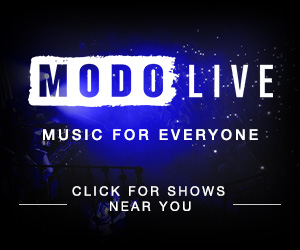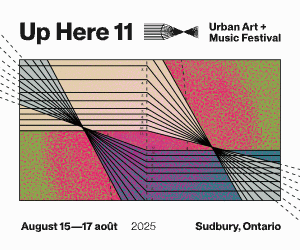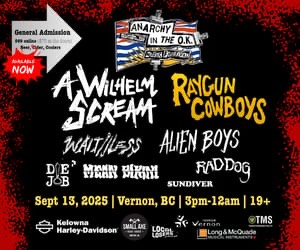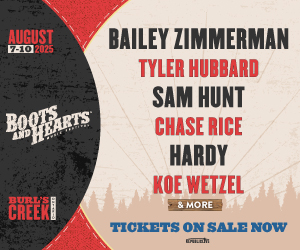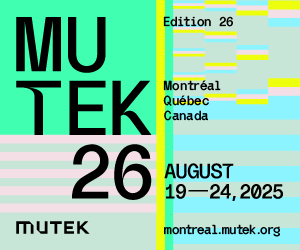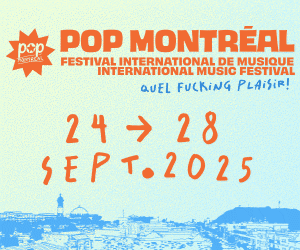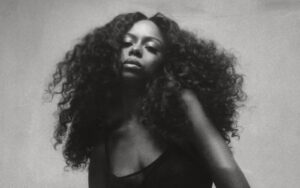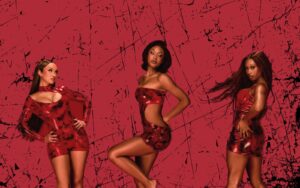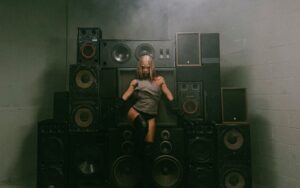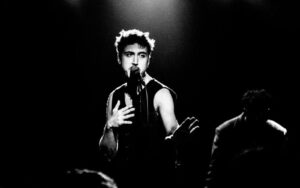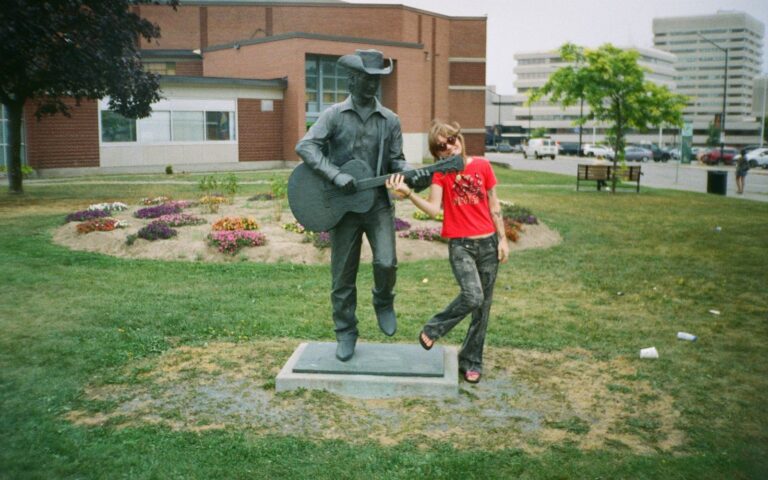
RANGE Magazine’s Guide to Sudbury, ON
We had a weird and wonderful time at Up Here Festival.
by Emma Johnston-Wheeler
Photos by Juan Carlos Echavarria and Emma Johnston-Wheeler
- Published on
Sudbury, ON is one of the weirdest, most whimsical, off the beaten path places we’ve ever been to. RANGE Magazine sent Toronto-based writer Emma Johnston-Wheeler on assignment to Northern Ontario for Up Here music and arts festival. A city famously known for its gigantic oversized nickel and commonly referred to as “the armpit of Canada.” Emma didn’t smell any terrible body odour on this trip. In fact, she had the best time ever. Here are her favourite places, people, and things that she experienced along the way.
Just like the Stompin’ Tom song, it’s Saturday night in downtown Sudbury and a boutique musical festival presented by a local artist collective has taken over Durham Street. Looking around, it doesn’t feel real. Toronto punk stalwarts PUP are headlining the main stage right next to the Money Mart, meters away from the Canadian Pacific Rail line that runs through the city.
The entirety of Sudbury’s alternative music scene is gathered in anticipation. A wooden DJ booth has been resurrected beside a large wooden dome that appears to be decorated with scrap fabric and multi-coloured lanterns. On one side of the street, festival goers are playing table tennis beside a pop up bar. On the other, they’re hula hooping and blowing bubbles on strips of grass donated by the local nursery. Among the toilets, there’s a Porta Potty portal that leads to a psychedelic seating area. Massive murals are visible in the background, commissioned by artists from all over Canada.
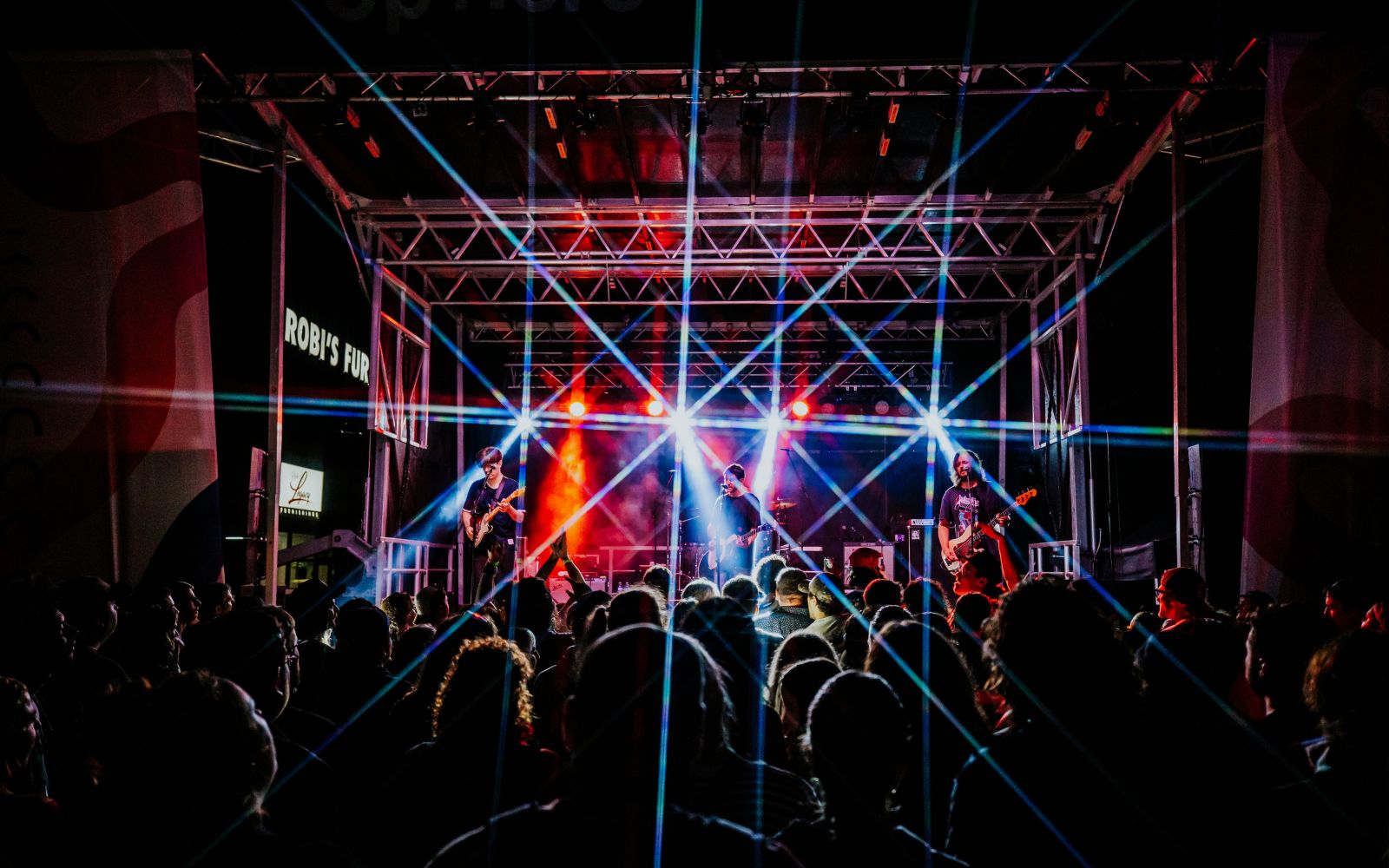
PUP performing at Up Here Festival (Photo: Juan Carlos Echavarria)
PUP last played in Sudbury 13 years ago at the Townehouse Tavern. That was three years before the Up Here festival even got its start, now celebrating its 10th anniversary with years of successful performances under its belt. PUP frontman Stefan Babcock actually has a cabin near the area where he spends his summers – he tells the audience “I say I like a lot of places that I don’t like…most of them suck ass. But I like this place enough to spend half of my life up here. I don’t give a shit what anybody says about you Sudbury, you’re alright.” Everyone cheers, and there’s a real sense of love and gratitude in the air, a sort of “we built this” feeling characteristic of grungy cities that artists call home.
In general, Sudbury has a surreal quality. It reminds me of a story-based video game, because there are unusual visuals, recurring characters, extensive lore, and many opportunities for side quests. The prelude to the main narrative (in this case: the four-day music and art festival) is the drive up, which I sincerely recommend doing if you’re traveling from Southern Ontario. My friend and I road tripped up Trans-Canada Highway 400 from Toronto, blasting girly pop power anthems like “Bubblegum Bitch” and “My Humps.”
Before embarking, another friend of mine had compared the venture to Fear in Loathing in Las Vegas, in which journalist Hunter S. Thompson drives with his lawyer to Las Vegas for an assignment. And it did feel like that, but instead of my lawyer, I brought a girl, and instead of desert, we drove past endless trees and the impressive rocky landscape of the Canadian Shield.
Quality Inn
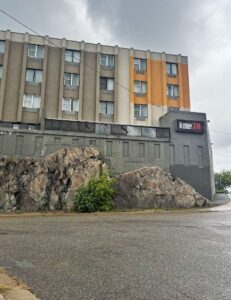
390 Elgin Street South. $95 per night.
Our hotel of choice is the Quality Inn on Elgin, which hosts many of the performing artists during the festival. We enjoyed walking among the musicians in their downtime, overhearing a Toronto band preparing for their set during the hotel’s complimentary breakfast or making flirty eye contact with a Montreal guitarist in the lobby.
The place is strange-looking from the outside, built on the side of a rock face at the top of a small hill, overlooking a 50+ year old bridge covered in world flags that represent the city’s multiculturalism (The “Bridge of Nations”). You have to walk under the bridge to get to any restaurant or venue, or over it if you want to visit the beach – during which I suggest playing the “guess the flag” game with your pals and hollering at the passing train.
The inside is unpretentious, clean, and staffed by friendly people. There’s an Indian restaurant – Sukhdev – and The Lounge, an old school hole-in-the-wall bar that hosts live local music. It’s an intimate room with a great sound system.
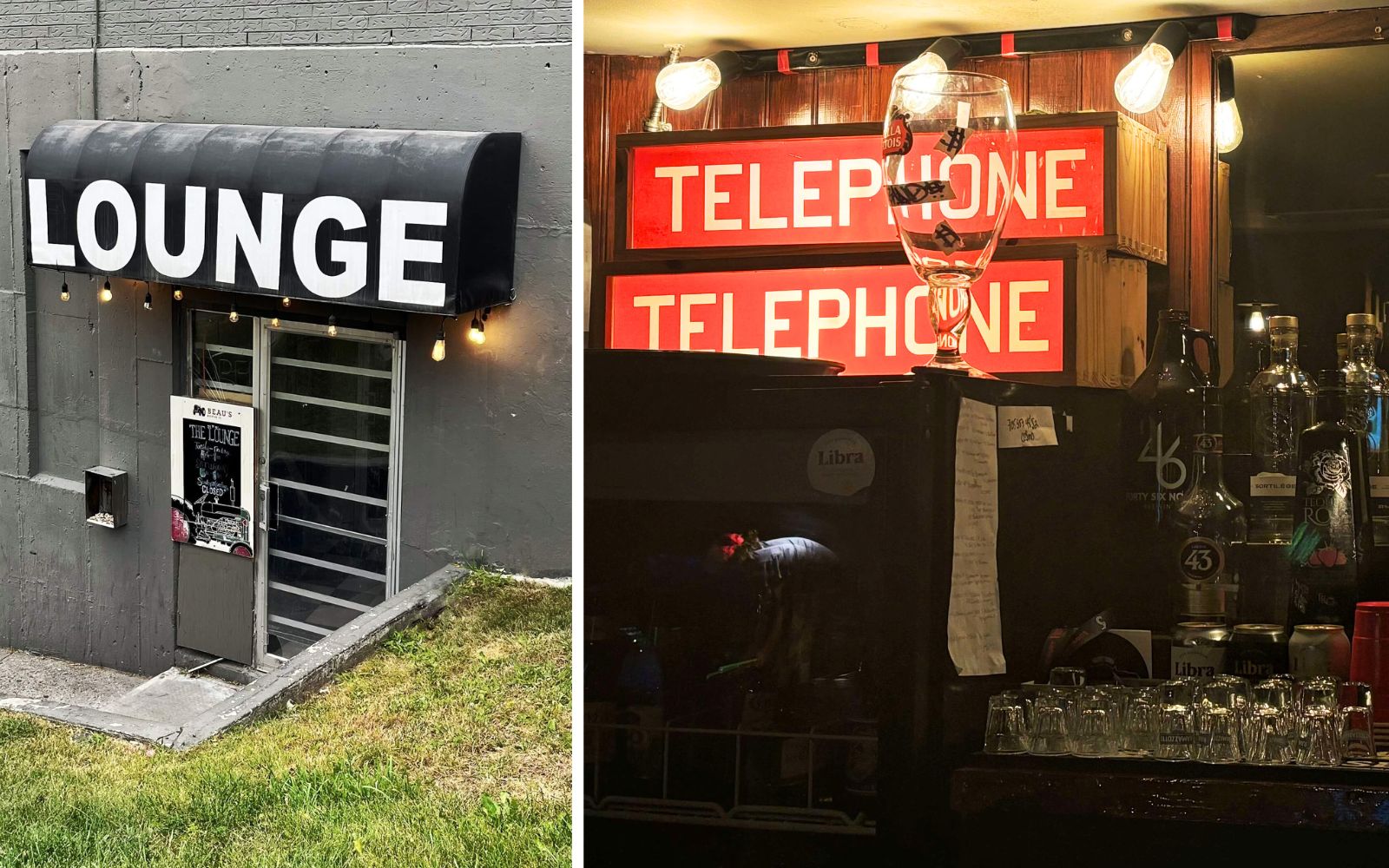
The Lounge outdoor entrance (left) and interior (right)
Downtown
The small downtown core is immediately surrounded by some surprisingly hilly suburbs, so you’ll need a car to enjoy the surrounding area (like the city’s notorious selfie spot: the Big Nickel). Otherwise, much of the arts scene prospers between Elgin Street, which runs directly parallel to the train line and Ramsey Lake, and Larch Street, where you’ll find the Place des Arts – a modern arts center dedicated to the city’s Francophone community. The festival performances take place at multiple venues throughout this area, including pop-ups in surprise locations.

An art installation at Up Here Festival (Photo: Juan Carlos Echavarria)
Food and drinks
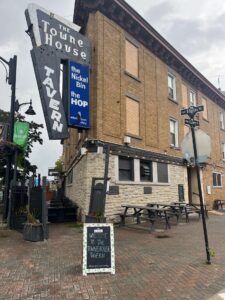
The Townehouse Tavern (206 Elgin St)
The first day of the festival is pretty lowkey, so we got an early dinner ahead of the opening show. There’s a slew of businesses on the Elgin Street strip that are a must-stop on the way to the main festival grounds, only a five minute walk from the Quality Inn.
Interestingly, the Townehouse Tavern and The Laughing Buddha are both owned by the same family – the Desjardins. The former was opened by the family’s grandparents in 1987 and the latter opened in 2005 with the intention of reviving the street into a happening spot. They also own Be The Ball indoor golf lounge and Josie’s Secret Patio, which are a 15 minute walk from downtown and absolutely worth a visit.
The Laughing Buddha (194 Elgin St)
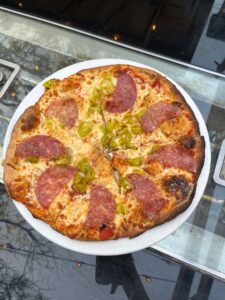
Try the Summer Salami pizza at the Laughing Buddha.
The Laughing Buddah is a trendy restaurant known for its beautiful and surprisingly expansive outdoor patio, which is covered by tree foliage and illuminated by string lights. The restaurant is vegan and vegetarian-friendly, offering an eclectic menu that features creative dishes like pizzas, sandwiches, oysters, nachos, and bao. A popular cocktail on the menu is the Watermelon Peach Lemonade, which complements the vibrant atmosphere. The patio’s ambiance reminded me of a spot in Montreal, which is fitting since it’s located right beside Little Montreal (182 Elgin St), a bar and deli that hosts karaoke and comedy shows.
Books and Beans cafe + The Night Owl (158 Elgin St)
The Night Owl and the café next to it offers a perfect spot to unwind with a coffee and a book in its inviting interior, especially before diving into festival activities. Business owners Liana Bacon and Dan Guillemette partnered with Latitude 46 Publishing, which focuses on literary works by authors connected to northern Ontario. During the Up Here festival, Passport ticket holders receive a 15% discount at the cafe. As for the the Night Owl, the bar itself is a 1920s-inspired speakeasy, known for its custom cocktails and small plates. Every Thursday is Jazz Night, where local musicians are paired with touring artists for a unique “musical first date.” Bacon and Guillemette have also expanded their creative ventures by converting a nearby Presbyterian church into a vibrant live music venue, further enriching the local arts scene.
Josie’s Secret Patio (222 Alder St)
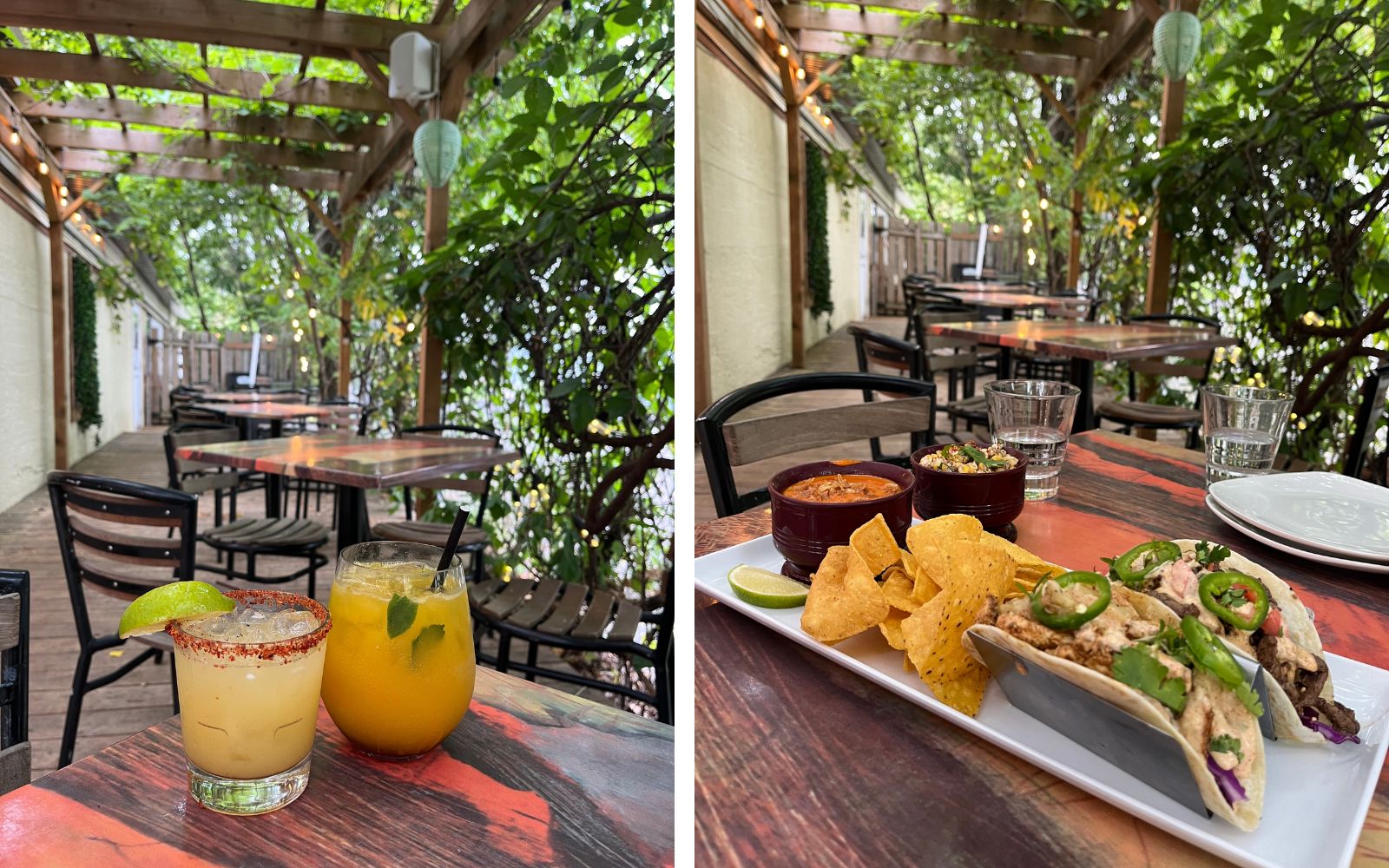
If you walk another 15 minutes from Elgin Street, the Desjardins own an outdoor restaurant that I truly fell in love with. Josie’s Secret Patio is discreetly tucked behind the Be The Ball indoor golf lounge, which occupies the former Alder Hall on Alder Street. It feels like a very in-the-know type of place: the instructions for finding it are to walk “down the laneway, inside the crooked gate.” The outside has a junkyard aesthetic that I adore, and the patio inside is covered by grape vines and string lights, with fun little activities set about including giant Jenga, cornhole and axe throwing.
And if you feel like golfing after your meal, it only costs $50 an hour per group to whack some balls in the interior golf simulation lounge – an activity that I found surprisingly cathartic as a non-golfer with a slight margarita buzz.
Side Quests
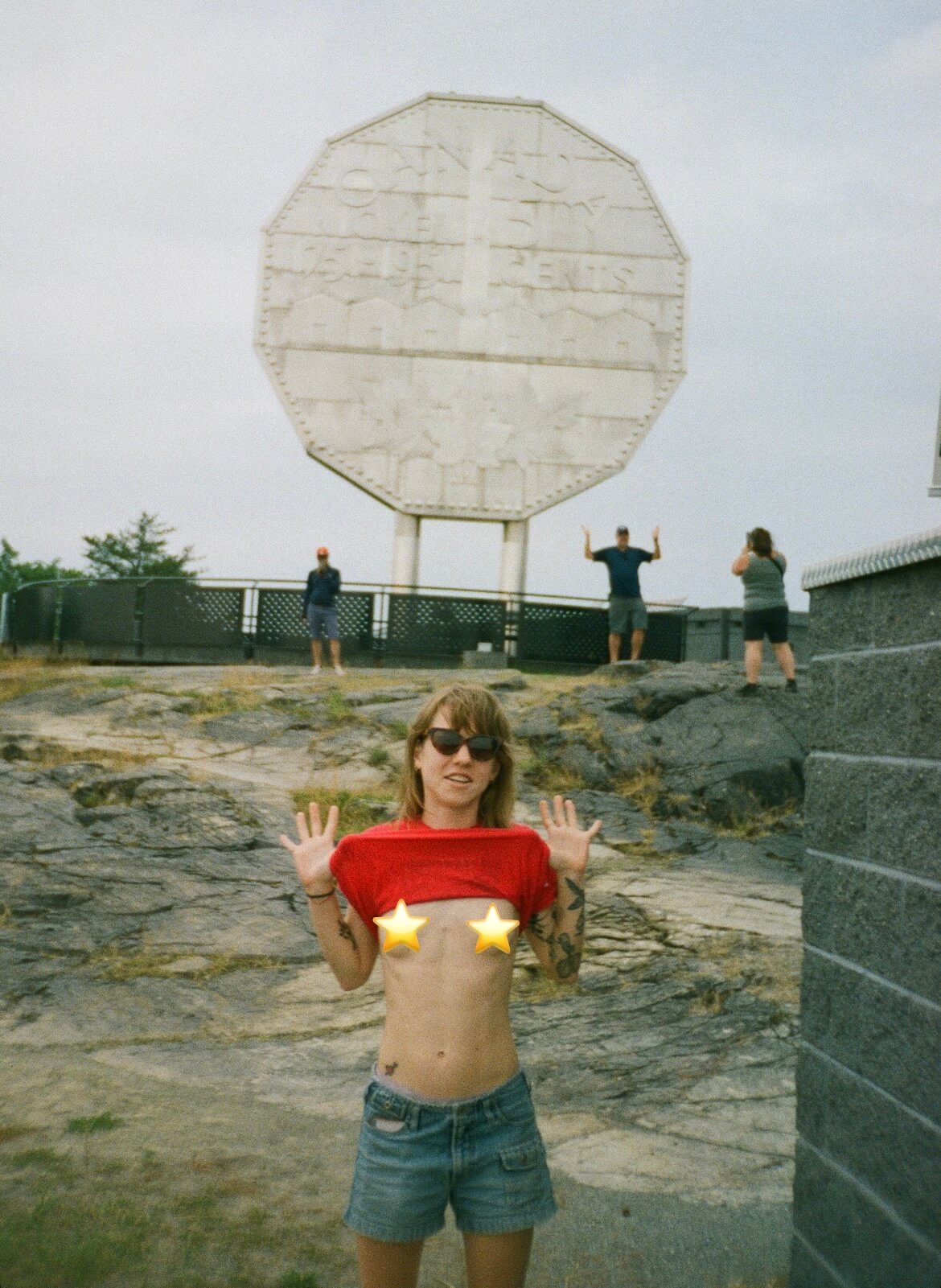
The Big Nickel (122 Big Nickel Rd)
The festival largely takes place in the evening, but it wasn’t hard to find things to occupy us during the day. It felt like a given that we visit the Big Nickel for an obligatory selfie with the chunk of change that gives the city its nickname.
The monument is a nine-meter replica of a 1951 Canadian nickel (the world’s largest depiction of a coin), located at the grounds of the Dynamic Earth science museum. The silly larger than life object only deepens my video game perception of Sudbury. The drive up the winding hill to the car park is a short but momentous journey, much like driving up Signal Hill in St. John’s, NL, or Mount Royal in Montreal.
My friend and I figured we’d up the stakes by seeing if we could flash each other in front of the coin without getting spotted by incoming tourists. I would imagine this is not an activity that Sudbury Tourism endorses, but this is a music publication after all, so naturally my inclination is to be as rock and roll as possible.
TNT Pawn shop (455 Notre Dame Ave.)
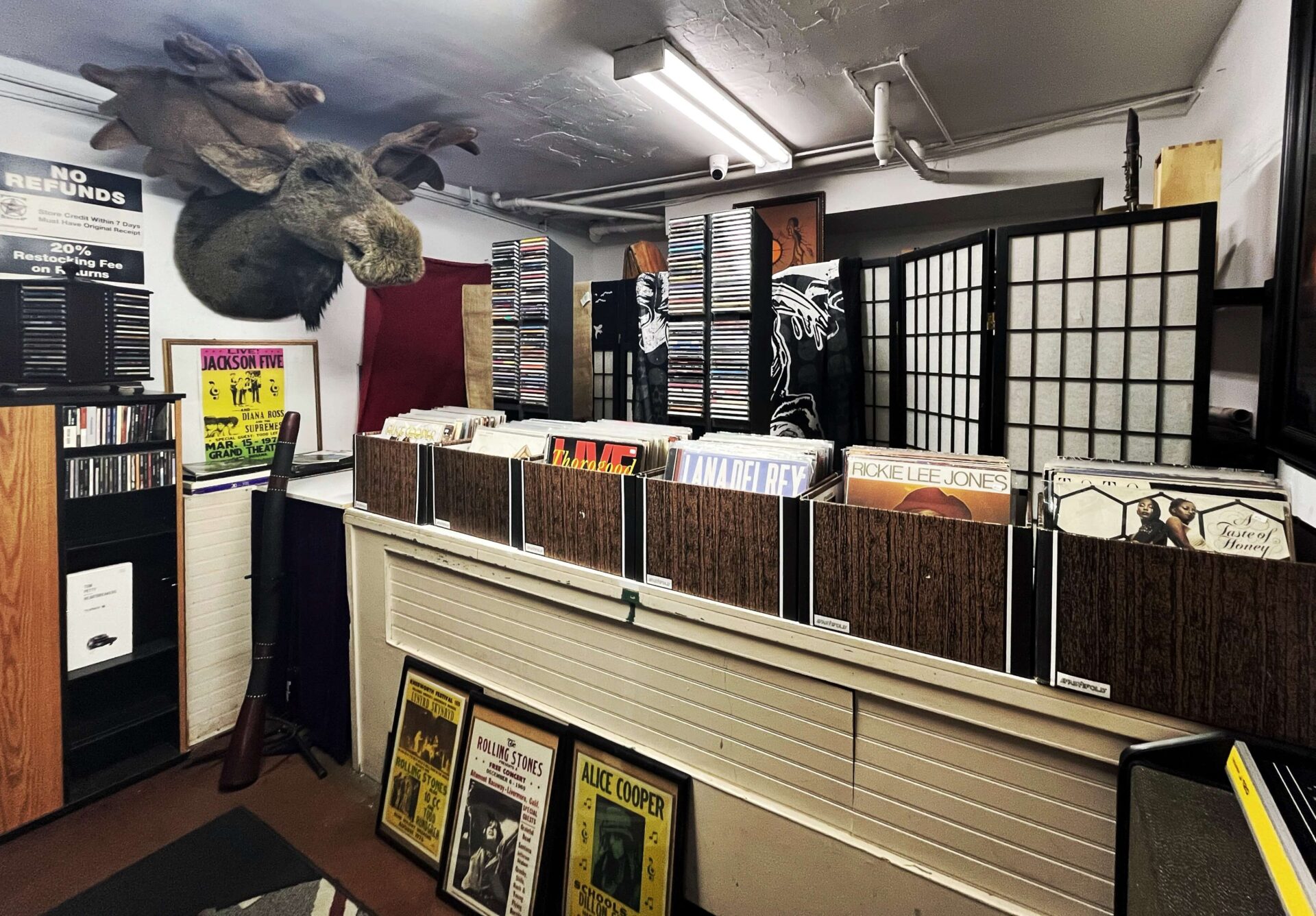
The record room at TNT Pawn Shop.
I’m a sucker for a knick-knacks and the pawn shop has a ton of neat things at affordable prices: sports cards, silver jewelry, collector’s items and vintage lighters, as well as guitars and records. I left proudly with a swiss army pocket knife that only cost me $30.
Bargain Annie’s (461 Notre Dame Ave)
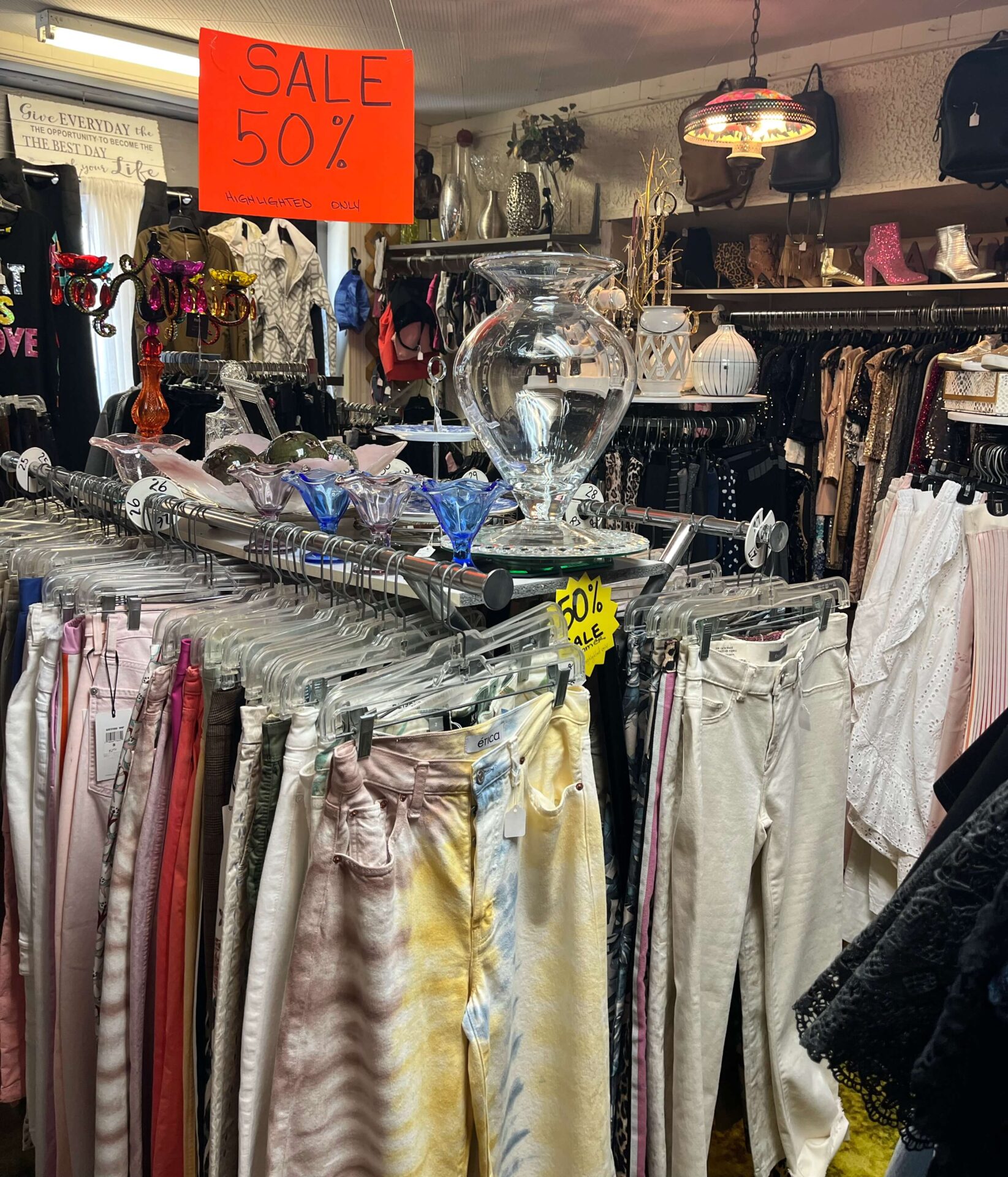
As thrifting fiends, we also visited Bargain Annie’s, a 40-year-old women’s vintage store beside TNT Pawn Shop. You have to enter the store from a back entrance in the parking lot behind the pawn shop, which feels very Sudbury at this point. It looks inconspicuous from the outside, but the interior is a glorious mess. The small space is packed full of affordably priced, unique vintage pieces, including designer brands like Anna Sui and Parasuco, as well as unique homeware. Everytime I turned a corner and emerged with a new find, the saleswoman would nod approvingly and repeat a phrase she’d delivered when I first walked in: “There are treasures everywhere.”
Cosmic Dave’s Vinyl Emporium (595 Kathleen St)
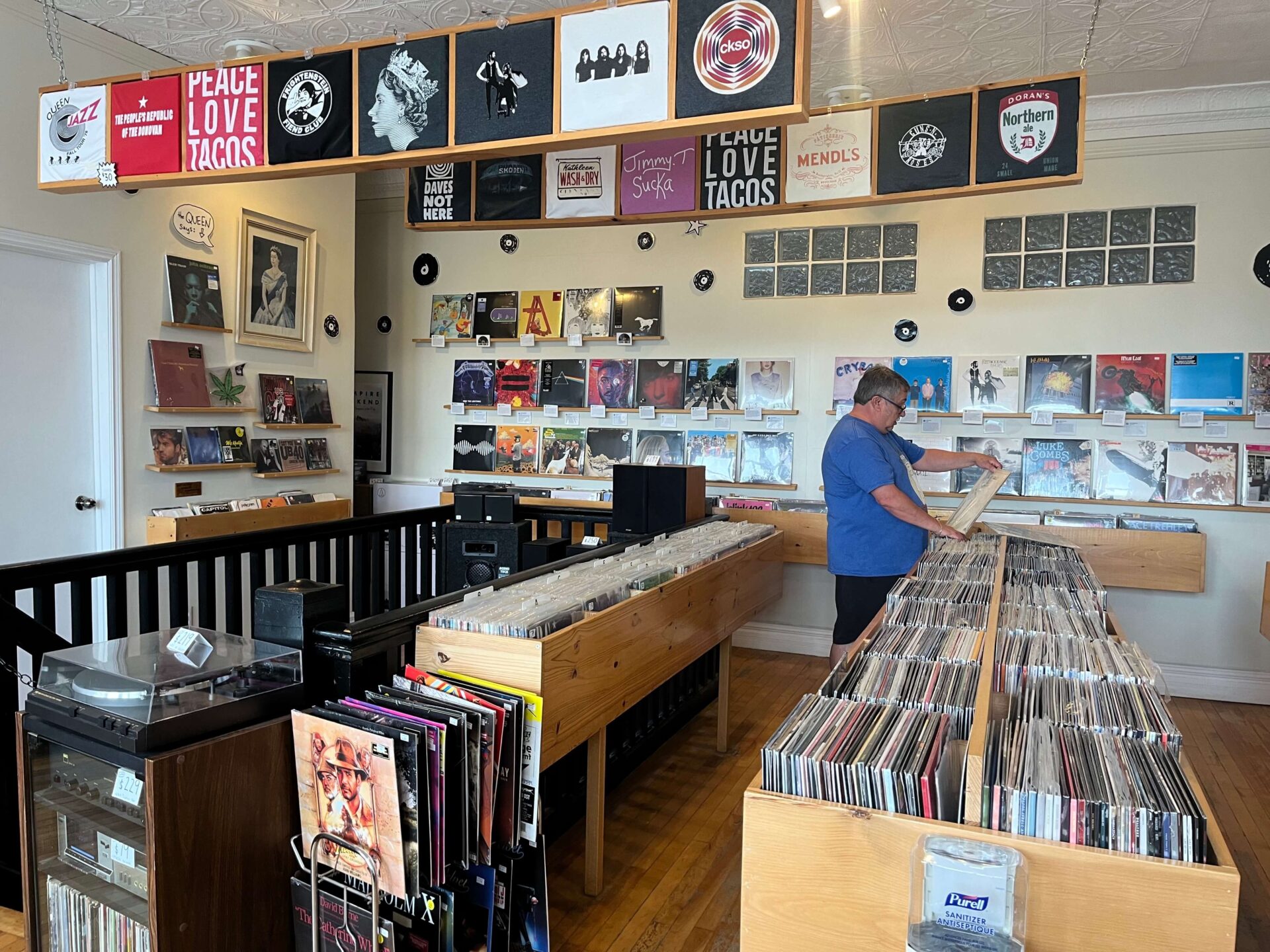
We headed uptown to Kathleen Street (a five minute drive from downtown) to visit Cosmic Dave’s Vinyl Emporium, a record store that stocks a mix of new and used vinyl. I was pleasantly surprised to discover that owner Mark Browning, who is the leader of local indie alt-country band Ox, also owns four other businesses on the strip. One of them is Cosmic Dave’s Guitar Shop (587 Kathleen St) which sells higher end guitars and offers repairs. The other three are Tucos Taco Lounge (582 Kathleen St), named after one of the Ox albums, Flurple’s ice cream shop (593 Kathleen St,) and Beards Coffee Bar (587 Kathleen Street), all of which are vegan. As Browning says, he basically built a little vegan mecca full of all his favourite things. He also maintains a private recording studio on Elgin Street, which musicians can contact him to book.
Bell Park Main Beach (Bell Park Boardwalk)
The beach is about a 15 minute walk from Elgin Street and it’s the perfect place to decompress during the festival. The small swimming area is adjacent to some willow trees and a beautiful gazebo atop a hill overlooking the boardwalk.
Venues/Studios
Place des Arts du Grand Sudbury (27 Larch St)

This modern performing arts centre opened in 2022 and is home to seven key Francophone arts institutions. The logo, which serves as a metaphor for the groups existing “under one roof,” was actually designed by festival co-founder Christian Pelletier. The building, flanked by a French-language bookshop and boutique, and a popular bistro, is covered in intersecting steel planes that pay homage to Sudbury’s industrial heritage, while the inside represents the city’s Francophone history. There are multiple performance rooms including the 299-seat main theatre, La Grande Salle, which has beautiful acoustics; Le Studio Desjardins black box theatre for rehearsal and performance; and the Galerie du Nouvel Ontario white box gallery.
Knox Hall (73 Larch St)
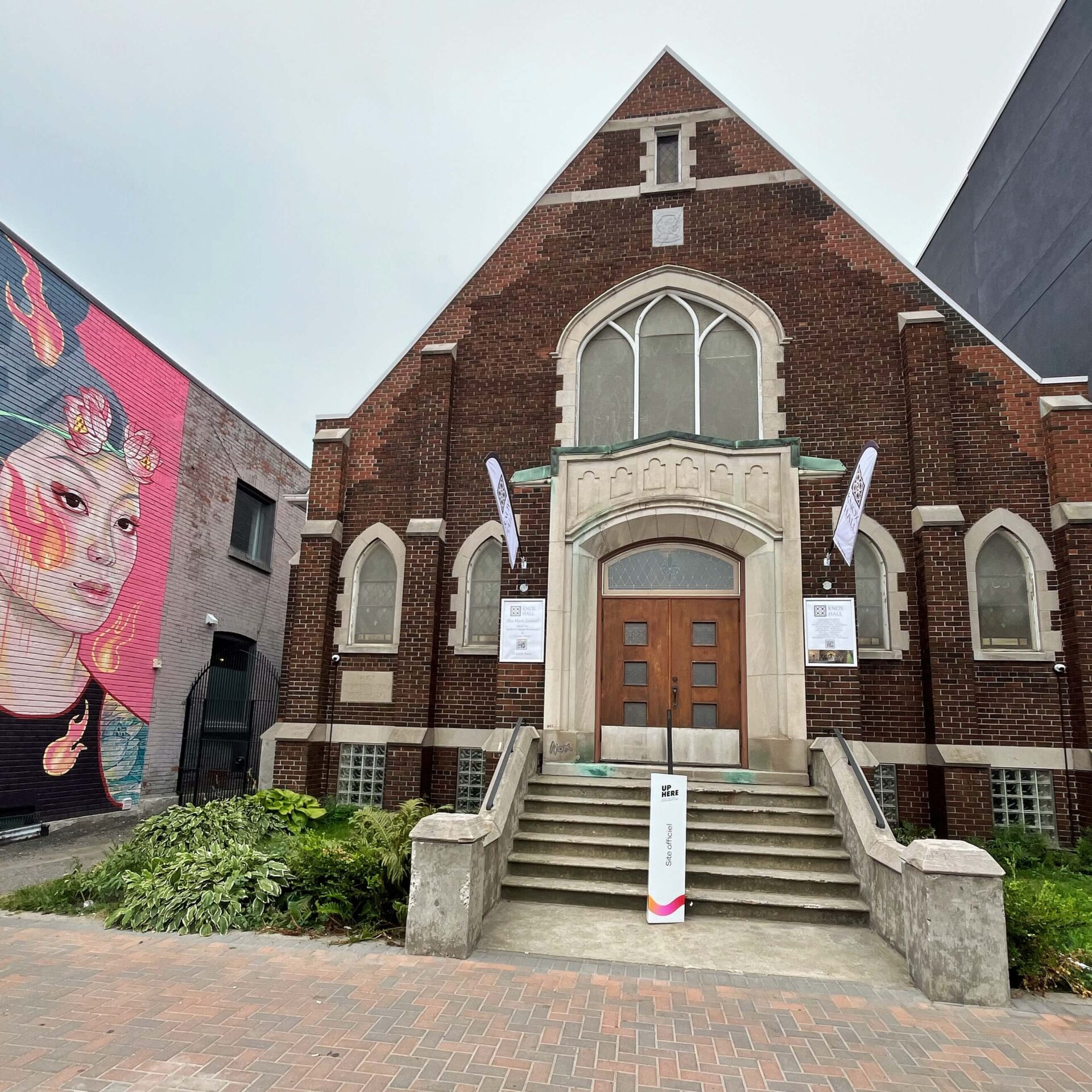
The old Presbyterian Church built in 1927 was renovated by Liana Bacon and Dan Guillemette, who operate the Night Owl bar and Books and Beans Cafe. The venue hosted its first show in late 2023, and Up Here used it for the first time this year.
Guillemette is an architect and says the space is perfectly suited as a music hall. “The acoustics are amazing,” he says, “It’s like being inside of a speaker.” There are two performance spaces: The upper hall (325 seats) and the lower hall (60 seats or 180 standing), which has a bar. Next to the green room is the former Minister’s office, which now says “Minister of Music,” a cheeky joke for supervising sound engineer André Plante, who works in the space.
In the next few months, the renovation will also include a loft style apartment for performing musicians to stay overnight in. In the meantime, Knox Hall is actively seeking artists to play the venue. Upcoming bookings include artists like Terra Lightfoot and Dan Mangan.
Deadpan Studios (The Donovan neighborhood)

Deadpan Studios, owned and operated by Up Here technical director Matthew D. Wiewel, resides in yet another old church that’s been renovated. The professional recording studio has a live room for music production as well as voice over and ADR, making it the go to space for festival artists who need a quick rehearsal space.
Up Here festival has branded Sudbury as “weird and wonderful” and that is exactly what it is, in the most endearing way. It’s a place with lots of passion and a strong sense of community that doesn’t take itself too seriously, where music lovers, artists, queers, and punks converge.
Every summer, Up Here brings together dozens of muralists, musicians, and installation artists to transform downtown Sudbury into an urban art gallery. The festival is a project of the volunteer-run non-profit We Live Up Here, which was founded in 2012 around the simple idea that art can playfully reshape our community.
By Sebastian Buzzalino
Calgary’s beloved summer festival trudges through the downpour with a stacked lineup of genre-bending greatness.
By Megan Magdalena
Rebecca White of Vancouver punk act WAIT//LESS interviews frontwoman Missy Dabice in a backstage catharsis session.

